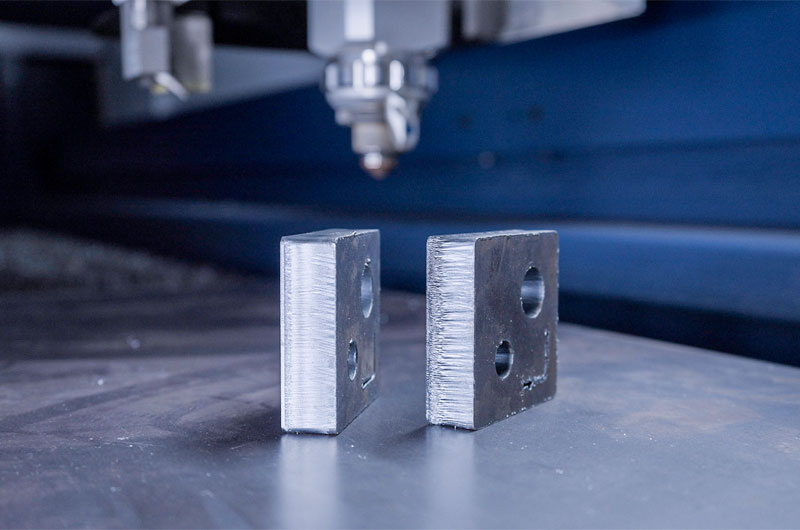In the world of metal and sheet material processing, edge quality is a critical factor influencing the performance, appearance, and usability of a final product.
From aerospace components to architectural panels, the edges of a cut part must often meet strict tolerances and surface finish requirements.
Different cutting methods produce varying results in terms of edge smoothness, heat-affected zones, dross formation, and overall dimensional accuracy.
Why Edge Quality Matters?
Edge quality is more than a matter of aesthetics. It directly affects:
- Dimensional accuracy
- Structural integrity
- Weldability and joint fit
- Corrosion resistance
- Assembly and part compatibility
Poor edge quality can lead to burrs, roughness, micro-cracks, or distortion—each of which can compromise the function or life span of a part. As such, choosing the right cutting method is essential for achieving desirable results in downstream processes like welding, coating, or assembly.
Common Cutting Methods and Their Impact on Edge Quality
1. Laser Cutting
Laser cutting directs a concentrated beam of light to heat and precisely cut through material by melting, burning, or vaporizing it along a defined path. It’s widely used for metals, plastics, and composites.
Edge Quality:
- High precision and smooth edges – ideal for intricate or tight-tolerance designs.
- Minimal burring on metals like stainless steel and aluminum.
- Heat-Affected Zone (HAZ): Narrow, but still present, especially on thicker sections.
- Possible discoloration on the edge due to oxidation, particularly on carbon steel.
Best For:
- Thin to medium thickness sheets (up to ~20 mm steel)
- Jobs requiring high-speed, high-precision cuts with minimal post-processing
Limitations:
- Material warping may occur with thin sheets due to heat.
- Reflective materials (e.g., copper, brass) require special lasers.
2. Plasma Cutting
Plasma cutting employs a high-temperature stream of ionized gas to melt and forcefully remove material, making it ideal for cutting conductive metals such as steel, aluminum, and copper.
Edge Quality:
- Moderate to good quality on thicker materials (above 6 mm).
- Rougher edges compared to laser, especially at high speeds.
- Slag or dross formation on the underside that may require grinding.
- Wider kerf than laser cutting.
Best For:
- Medium to thick metals (6–50 mm)
- Applications where speed and material removal rate are more important than ultra-smooth edges
Limitations:
- Larger HAZ compared to laser cutting
- Less precise than laser or waterjet for fine details
3. Waterjet Cutting
Waterjet cutting employs a high-pressure stream of water, typically combined with abrasive particles, to precisely erode and cut through materials. It’s versatile and can cut metals, glass, stone, composites, and rubber.
Edge Quality:
- No heat-affected zone—ideal for heat-sensitive materials.
- Very smooth edges with no burrs or distortion.
- Slight taper may be visible on thick materials but can be minimized with multi-axis machines.
Best For:
- Complex or multi-material parts
- Heat-sensitive materials like composites, tempered glass, or hardened metals
Limitations:
- Slower than laser or plasma
- More expensive consumables and maintenance
4. Mechanical Cutting (Shearing, Sawing, Milling)
Mechanical cutting involves physical force through blades, saws, or rotating tools. Common in manual and CNC-based processes.
Edge Quality:
- Shearing: Clean edges but can cause distortion on thin sheets.
- Sawing: Rougher edge, often with visible tool marks and burrs.
- Milling: Precise edges but slower and more costly.
Best For:
- Simple shapes or straight cuts in sheet metal
- Secondary machining for tight tolerances
Limitations:
- Can cause mechanical stress and burrs
- Slower than thermal or jet-based methods for complex shapes
Factors Influencing Edge Quality
Regardless of the method, several variables influence the final edge condition:
- Material Type and Thickness
- Softer materials like aluminum are more prone to burring.
- Thicker materials may have more pronounced edge taper or HAZ.
- Cutting Speed and Feed Rate
- Too fast = rough, jagged edges.
- Too slow = excessive heat input or dross buildup.
- Tool Condition
- Dull blades or nozzles degrade cut quality and increase burr formation.
- Gas or Abrasive Type
- In laser cutting, oxygen vs. nitrogen gas affects oxidation and edge discoloration.
- In waterjet, abrasive grain size impacts smoothness.
- Machine Calibration and Control
- CNC-controlled systems produce more consistent results.
- Proper focus, alignment, and compensation settings are essential.
Choosing the Right Cutting Method for Edge Quality
| Cutting Method | Edge Quality | Heat-Affected Zone | Burr Formation | Material Types | Best Use Cases |
|---|---|---|---|---|---|
| Laser | Excellent | Narrow | Minimal | Metals, Plastics | Precision parts, engraving |
| Plasma | Moderate | Wide | Moderate | Metals | Structural parts, thick steel |
| Waterjet | Excellent | None | None | Multi-material | Heat-sensitive or intricate shapes |
| Mechanical | Varies | None | High | Metals, Plastics | Simple straight cuts, roughing |
When choosing a cutting process, the priority is often a trade-off between speed, cost, edge quality, and material compatibility. For instance:
- A manufacturer of stainless-steel control panels might prefer laser cutting for clean, discoloration-free edges.
- A shipyard cutting thick steel plates may choose plasma cutting for faster throughput.
- A medical device maker working with titanium and composites may require abrasive waterjet cutting to avoid microstructural changes.
Improving Edge Quality Through Process Optimization
Even within a given cutting method, manufacturers can significantly improve edge quality by:
- Using assist gases (laser cutting): Nitrogen reduces oxidation and discoloration.
- Optimizing cut height and standoff distance: Especially important in plasma and waterjet systems.
- Regular tool maintenance: Ensures clean cuts and extends tool life.
- Advanced CNC programming: Helps achieve better control over motion and lead-ins/outs.
- Secondary operations: Deburring, grinding, and polishing can refine edges where needed.

